How many bay leaves in a pound? If you enjoy cooking from scratch, you may very well consider adding bay leaves to your next soup, sauce, or stew for their unique fragrance and flavoring. Bay leaves are sold either fresh or dried, but you’ll probably have an easier time finding them dried.
Since almost everything is cheaper in bulk, you may want to go ahead and buy an entire pound of bay leaves- especially if you lucked out and found a place that sells them fresh. But is it really worth it to buy bay leaves by the pound?
If you own a restaurant or cook for a large family, it may be wise to buy large quantities. If not, you run the risk of the food items spoiling before you get a chance to use them.
So, it’s understandable for you to want to know how many bay leaves are in a pound before making the investment.
How Many Bay Leaves Are in a Pound?
There are 700 to 800 fresh bay leaves in one pound, so you may want to buy a smaller quantity unless you own a restaurant- especially considering the fact that fresh bay leaves only last for about a week in the refrigerator. Or you could just buy dried bay leaves, which can last up to two years in your pantry.
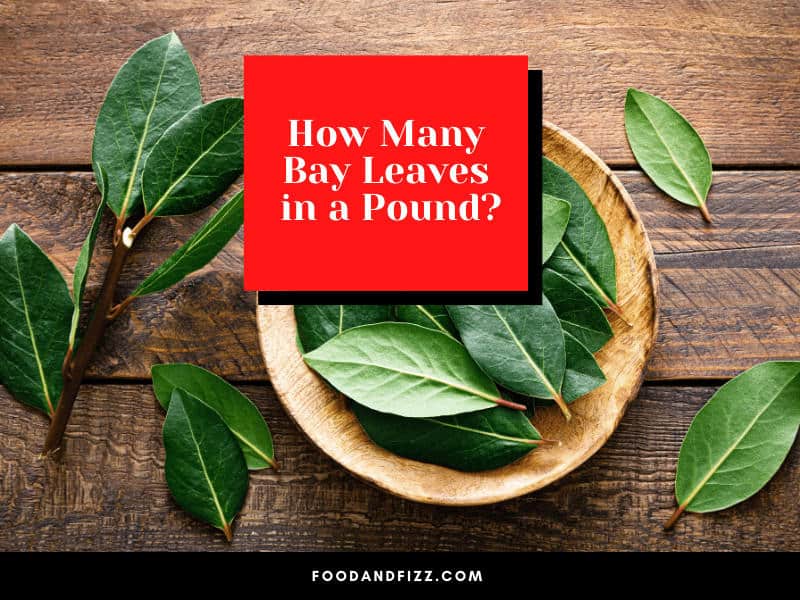
How Many Bay Leaves to Expect By Weight?
If you try to purchase bay leaves by the pound, you’re going to end up with a whole lot of bay leaves- a total of 700 to 800 bay leaves! If you own a restaurant or plan on drying the fresh leaves and reselling them, this might be a worthwhile investment. If not, it would be a waste of money.
Even if you were to buy a quarter pound of fresh bay leaves, you’ll still have almost 200 leaves- which may work if you’re planning on preparing a large meal for a holiday gathering or church event.
This may be a part of the reason that bay leaves are often sold dried instead of fresh. While fresh bay leaves will only last for about a week in your refrigerator, dried leaves will be good for up to 2 whole years without refrigeration.
Dried bay leaves are sold at most grocery stores in containers weighing as little as two ounces- which is usually the wisest purchase if you don’t use bay leaves very often.
But you can also buy dried leaves in bulk containers weighing as much as 28 pounds! This option is expensive, but may be worth it – if you own a restaurant or use bay leaves a lot.
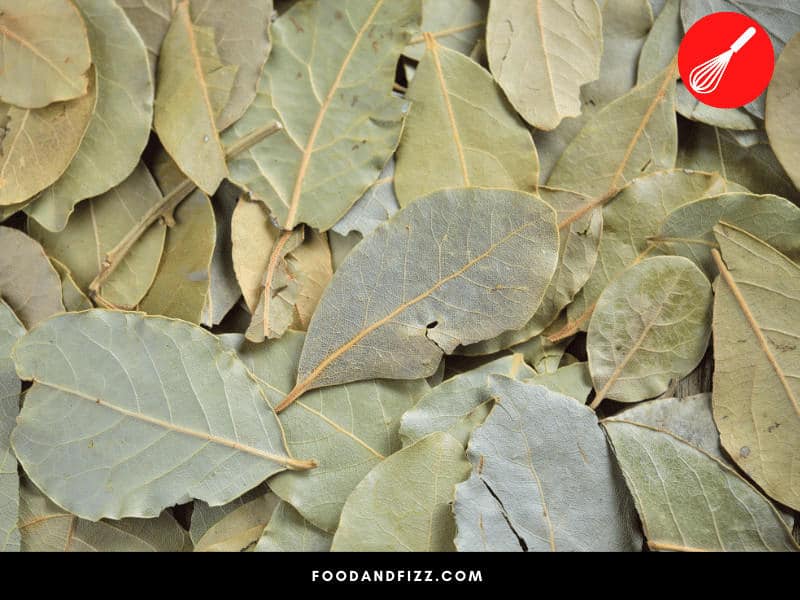
Measurements and Cost of a Pound of Bay Leaves
Most likely, you’ll never come across a recipe that calls for an entire pound of bay leaves. Usually, a recipe will include say five bay leaves or a cup of bay leaves as an optional ingredient, and you can always season to taste.
If you love bay leaves, but it sounds ridiculous to buy them by the pound, you can always buy bay leaves by the ounce- which will give you about 132 leaves. Given that amount, a two-ounce jar of dried bay leaves would be adequate for most home chefs.
If you do want to go ahead and buy a whole pound of bay leaves, you can expect to pay about $28.00. Bay leaves are also available for purchase in bulk amounts- up to 5 to 10 pound bags, which will cost you about $50.00 to $80.00.
But bay leaves aren’t necessarily expensive. If you’d just like to add a container of bay leaves to your home spice rack for occasional use, you can always buy a one-ounce container for as little as $1.78.
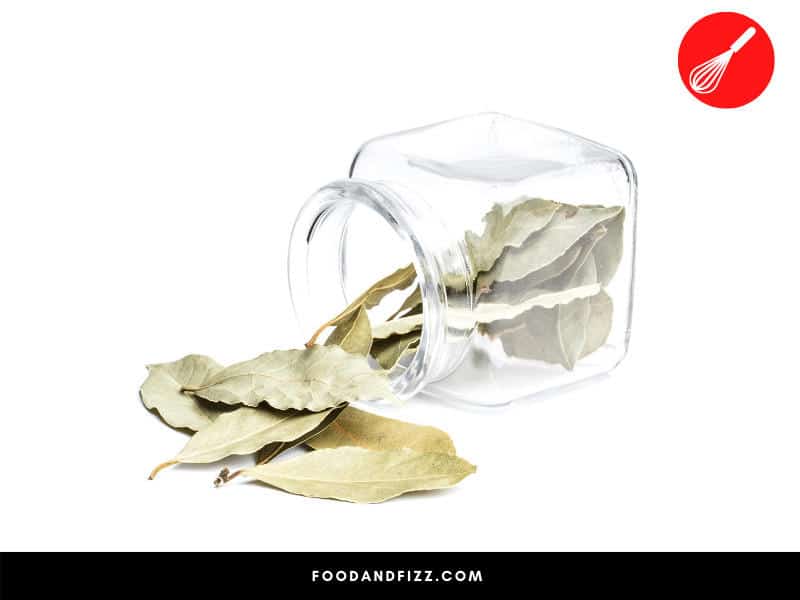
Nutritional Benefits of a Pound of Bay Leaves
Although bay leaves are often used to brew tea or added to soups and stews as an aromatic seasoning, they aren’t meant to be eaten. It’s actually recommended that you remove them from the dish before serving a meal.
But bay leaves may be good for more than just their scent and flavor. Some studies have suggested that bay leaves may offer a range of possible health benefits ranging from inhibiting cancer growth to improving memory to lowering blood sugar. However, many of these studies are incomplete or outdated.
It’s still indisputable that bay leaves are rich in vitamins A, C, and B6- which support your immune system. Bay leaf tea can also help relieve stomach upset, and it’s claimed that the scent of burning bay leaves can calm anxiety.
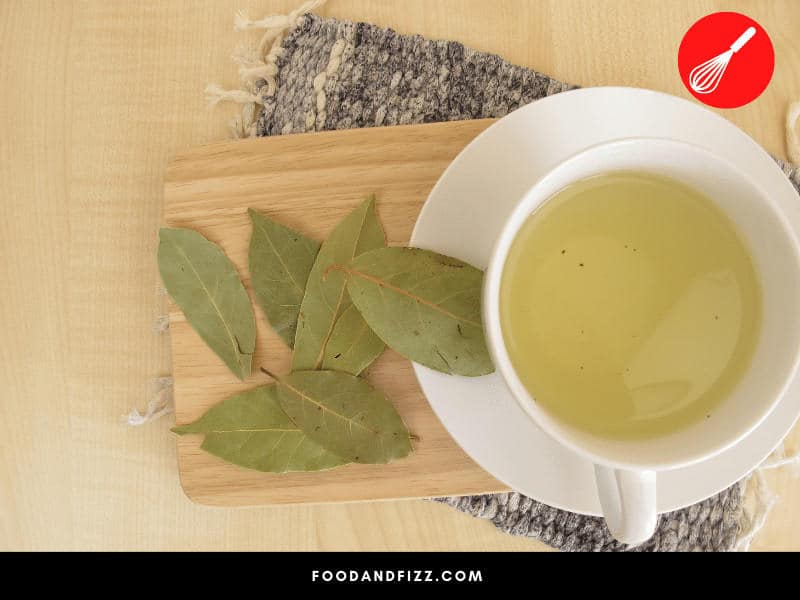
Conclusion to How Many Bay Leaves in a Pound?
Even though you typically get a better deal when buying items in bulk, it’s probably not the best move to buy bay leaves by the pound unless you’re a restaurant owner or purchase them already dried.
While bay leaves are an excellent herbal spice to add to soup, stew, or sauce, the reality is that you probably won’t use them as often as intended.
That said, any person who enjoys cooking homemade dishes from scratch should include bay leaves in their arsenal of spices.
If you don’t know what you’ll possibly do with your extra bay leaves, there are many bay leaf recipes online that can help you make use of the leaves before they go bad.
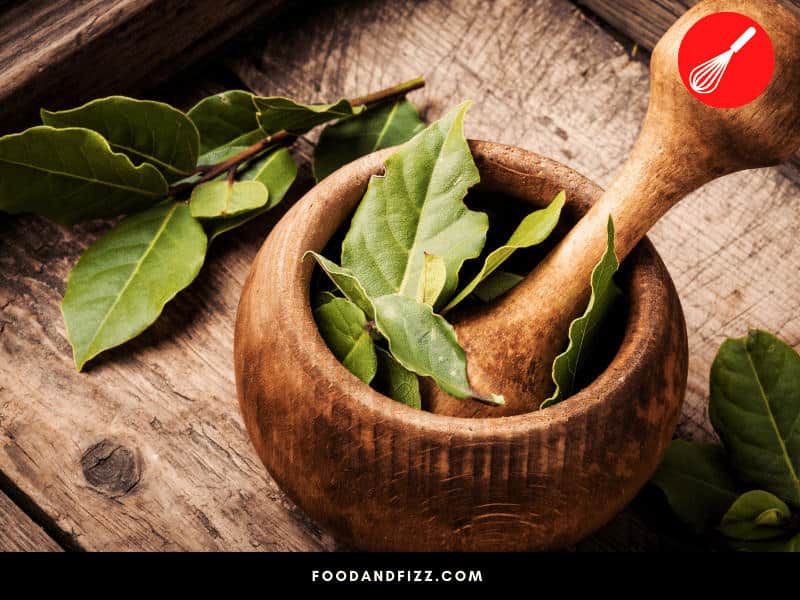
Frequently Asked Questions to How Many Bay Leaves In A Pound?
What Are the Side Effects of Bay Leaves?
If you use too many bay leaves in your dish, you may become tired after the meal. This effect may be more profound if you also take medication that causes drowsiness. Bay leaves are a popular herb for seasoning dishes, but you should always remove the bay leaves before serving the meal.
What Are Bay Leaves Good For?
The pungent aroma of bay leaves may help to reduce sinus congestion. Bay leaves are also said to relieve an upset stomach. They contain vitamins and minerals, including vitamins C and B6, but much of the research on the health benefits of bay leaves is incomplete or outdated.
What is the Best Way to Use Bay Leaves?
If you want your soup or stew to smell wonderful when a guest walks into your kitchen, bay leaves should do the trick. They work amazingly well as a flavorful herbal spice when preparing soups, stews, and sauces. They can also be added to vinegar to boost the flavor of pickled foods.

